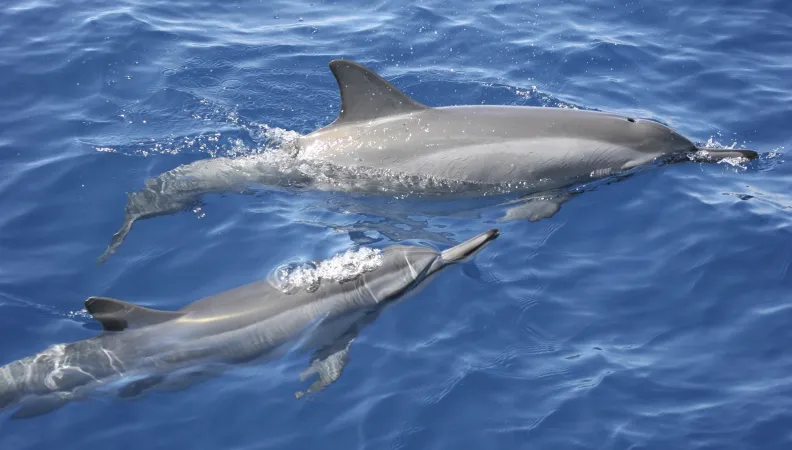Share the page
Reducing underwater noise emitted by maritime transport and services in the Western Indian Ocean (QWIO)
Project


-
Project start date
-
Status
In progress
-
Estimated date of project termination
-
-
Project financing date
-
-
Financing duration
-
4 years
-
Type of program
-
FFEM
-
Global financing amount
-
10600000 €
-
FFEM financing amount
-
3000000 €
-
Project lead member institution(s)
-
French Ministry for Ecological and Inclusive Transition
-
Country and region
-
Comoros, Reunion Island, Madagascar, Kenya, Mozambique, Seychelles, Mauritius, Tanzania, French Southern & Antarctic Lands
-
Type of financing
-
Grant
-
Partners
-
EU, African Aquatic Conservation Fund, Armateurs de France (French Shipbuilders Association), Bureau Veritas, Centre for the Research and Discovery of Sea Turtles, Local Group for Observing and Identifying Cetaceans, GLOBICE, Marine Megafauna Foundation, Ponant, Quiet Oceans, Socrata, Curtin University, University of Saint Andrews, Wildlife Conservation Society (WCS)
-
Beneficiaries
-
Wildlife Conservation Society (WCS)
-
Type of beneficiary
-
NGO, Foundation


Awareness of noise pollution generated by maritime transport and services and their potential ramifications on certain species will help protect the underwater ecosystem in the Western Indian Ocean. Supported by the FFEM, this project aims to engage all the relevant stakeholders in researching and adopting new practical measures to reduce this kind of pollution by 2025.
Context
The oceans are subject to increasing human pressures, endangering their ecosystems. One of the most significant pressures is underwater noise, which affects many marine species. Not only does noise pollution cause stress, it also endangers the survival of marine wildlife species that rely on acoustics for vital communication.
With countries in the Western Indian Ocean region focusing their economic development around increasing port capacity and maritime trade, the ensuing noise pollution could prove even more catastrophic for underwater wildlife by 2050. Supported by the FFEM, the Quiet Western Indian Ocean (QWIO) project therefore seeks to boost awareness of human-generated underwater noise and find new ways to mitigate it.
Description
The project has four components:
- Modelling the distribution of maritime transport and services, and assessing the impacts of underwater noise to provide scenarios for managing noise and navigation.
- In partnership with regional governments, intergovernmental organisations and the private sector, identifying and developing technological and management mechanisms to mitigate the threats from noise.
- Engaging the relevant stakeholders at national and regional levels to raise awareness of the threats posed by underwater noise in the oceans and limit any adverse effects.
- Ensuring ownership of the project by the private sector and appropriate international institutions, in support of actions to reduce the impacts of noise.
Impacts
- Producing a spatial atlas mapping the predictive soundscape, which will be maintained by an existing regional data exchange centre.
- Writing and disseminating an independent report on the potential economic impacts of the mitigation mechanisms identified.
- Organising training workshops in partner states.
- Publishing a biannual bilingual newsletter, a methodology guide for practitioners and presenting the project to the Marine Environment Protection Committee of the International Maritime Organization (IMO).
Exemplary and innovative characteristic
The innovative nature of this project, supported by the FFEM, lies firstly in the joint involvement of a wide range of stakeholders: national governments, marine scientists, private-sector businesses, maritime transport industry associations, universities and non-governmental conservation organisations.
There have yet to be any projects of this scale implemented in Africa and the Indian Ocean, in terms of reducing and managing noise pollution in the marine environment. As such, this will be the first time soundscape mapping has been produced for noise pollution caused by maritime transport and services in the region.
The project will also draw on innovative local initiatives using recently developed techniques, such as monitoring human and other biological signals using a network of underwater passive acoustic monitoring (PAM) equipment.
Sustainable Development Goals
ODD14 Life below water

ODD17 Partnerships for the goals



